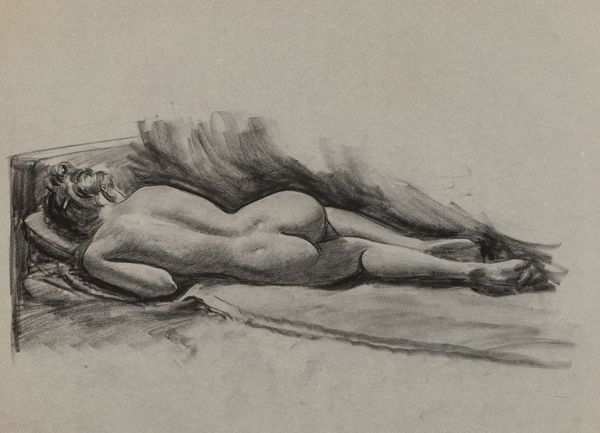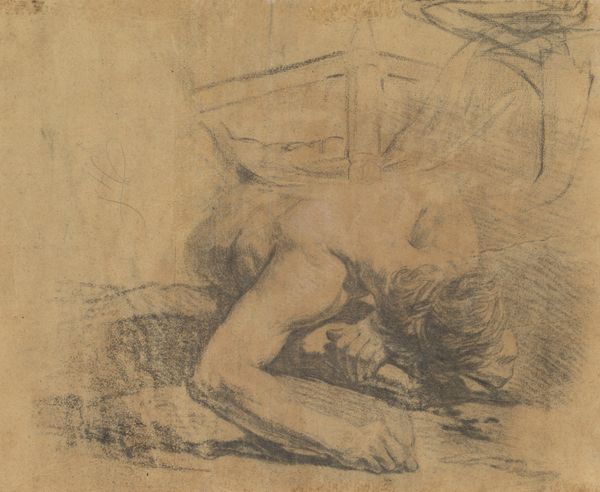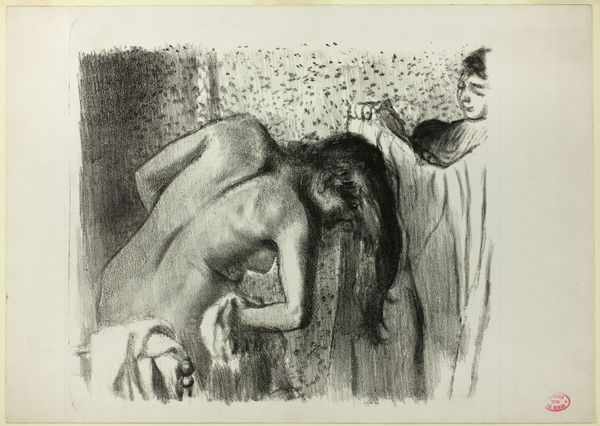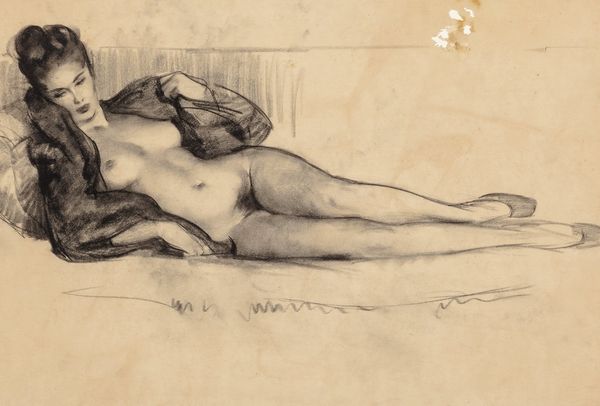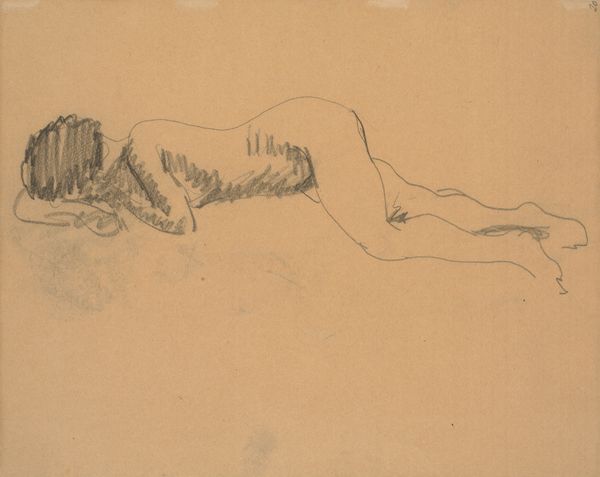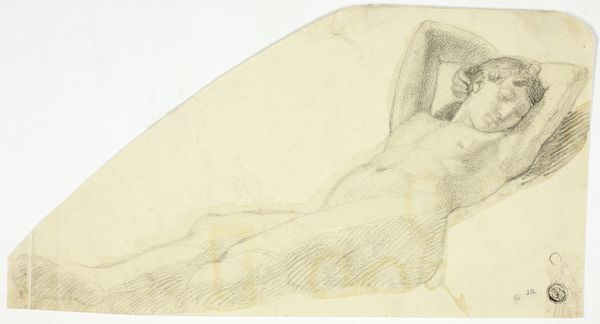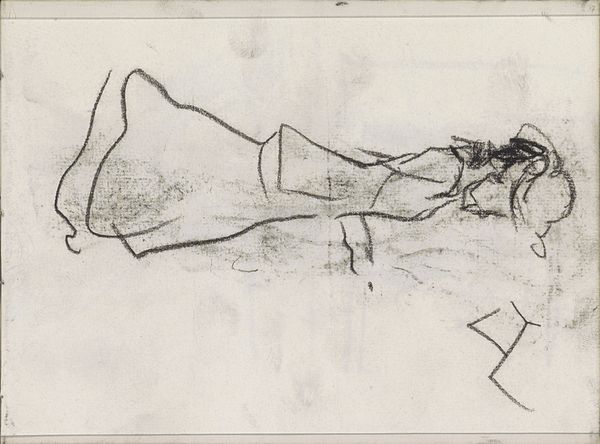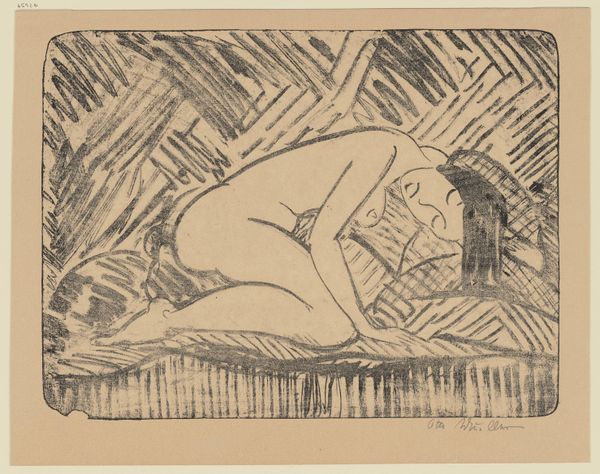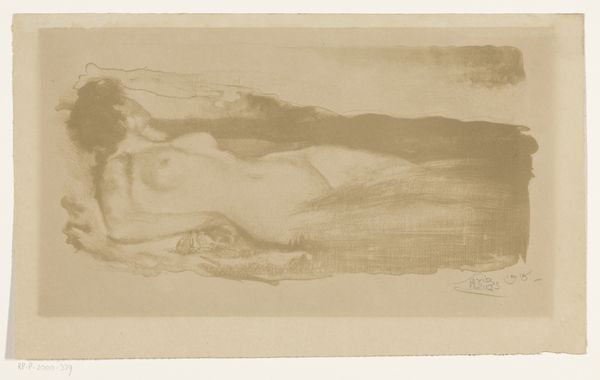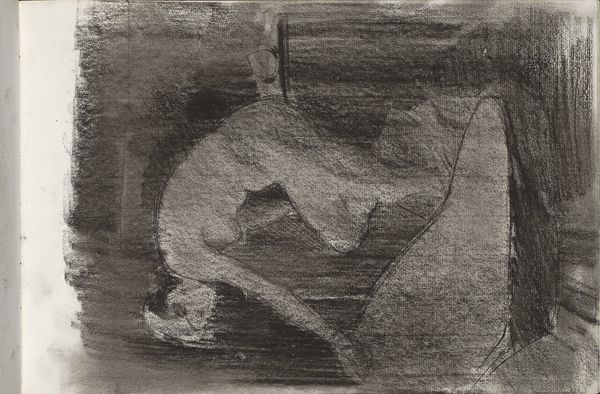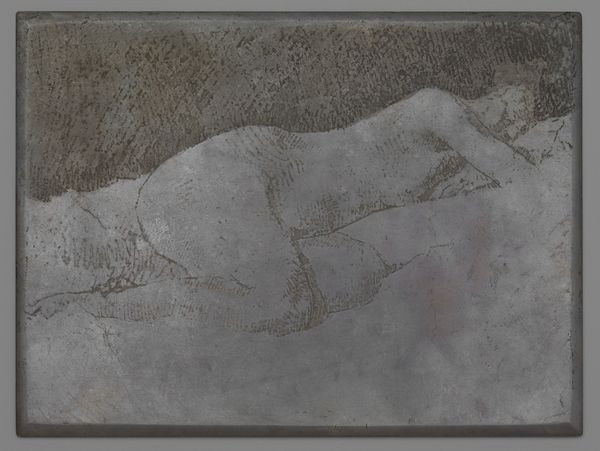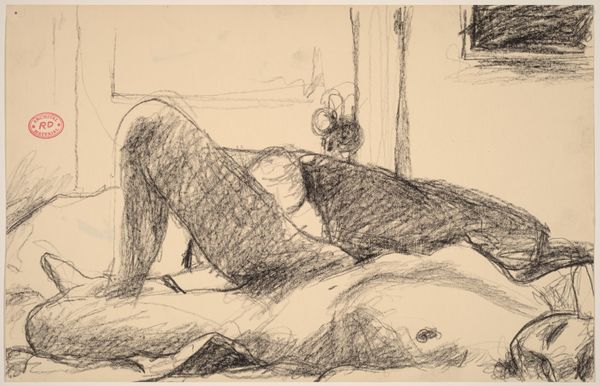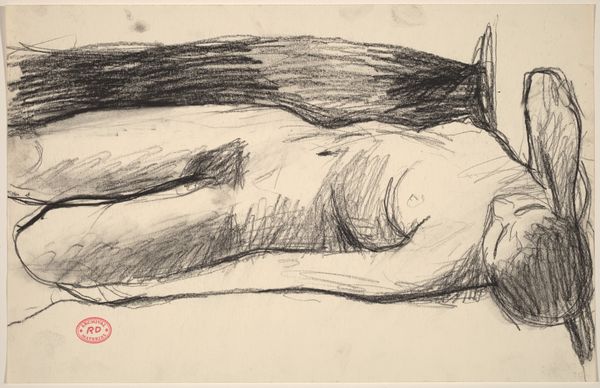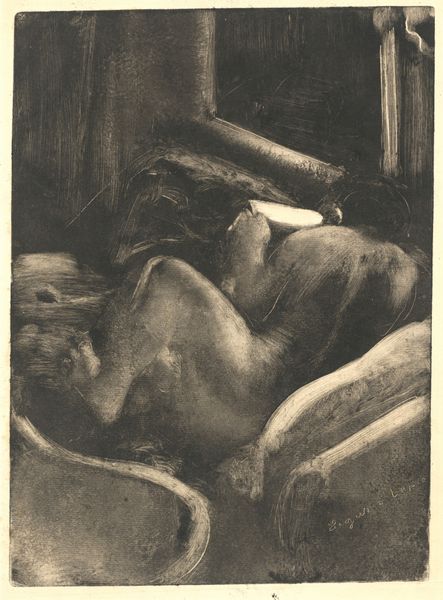
Dimensions: 272 mm (height) x 394 mm (width) (billedmaal)
Editor: Here we have "Liggende kvindelig model" - "Reclining Female Model" - a 1931 lithograph, drawing and print by Henry Nielsen. The stark contrast and bold lines create an immediate sense of raw vulnerability. What can you tell me about this work? Curator: I see here a distinct interrogation of the printmaking process. Note the evident labor involved in creating such bold lines and shadows. It's more than just image reproduction; it's about the material itself and how the artist manipulated the lithographic stone and ink. What statement does the artist make through the use of ink rather than charcoal? Editor: That's a good point, I'm not sure. Perhaps ink lends itself to the kind of definitive lines and shape we find here. Does that impact how you view it within Expressionism, then? Curator: Absolutely. Consider how the artist utilized lithography, typically used for mass production, to create an intensely personal expression. This juxtaposition of media with its inherent means of production complicates any straightforward reading of the nude as purely aesthetic. What were the labor conditions for artists working with printmaking at this time? The making of art, and the exploitation tied to it, is a huge context point for Materialists. Editor: It’s really interesting to think about this as less of an aesthetic rendering and more of an engagement with the means of production, it offers an entirely different insight into the process and historical framework behind the artwork. Curator: Exactly! Looking closely at art, one should always challenge preconceptions. The material informs the message, as much as, if not more than, any art historical movement. It helps us interpret the economic context and what might not appear right on the surface.
Comments
No comments
Be the first to comment and join the conversation on the ultimate creative platform.
